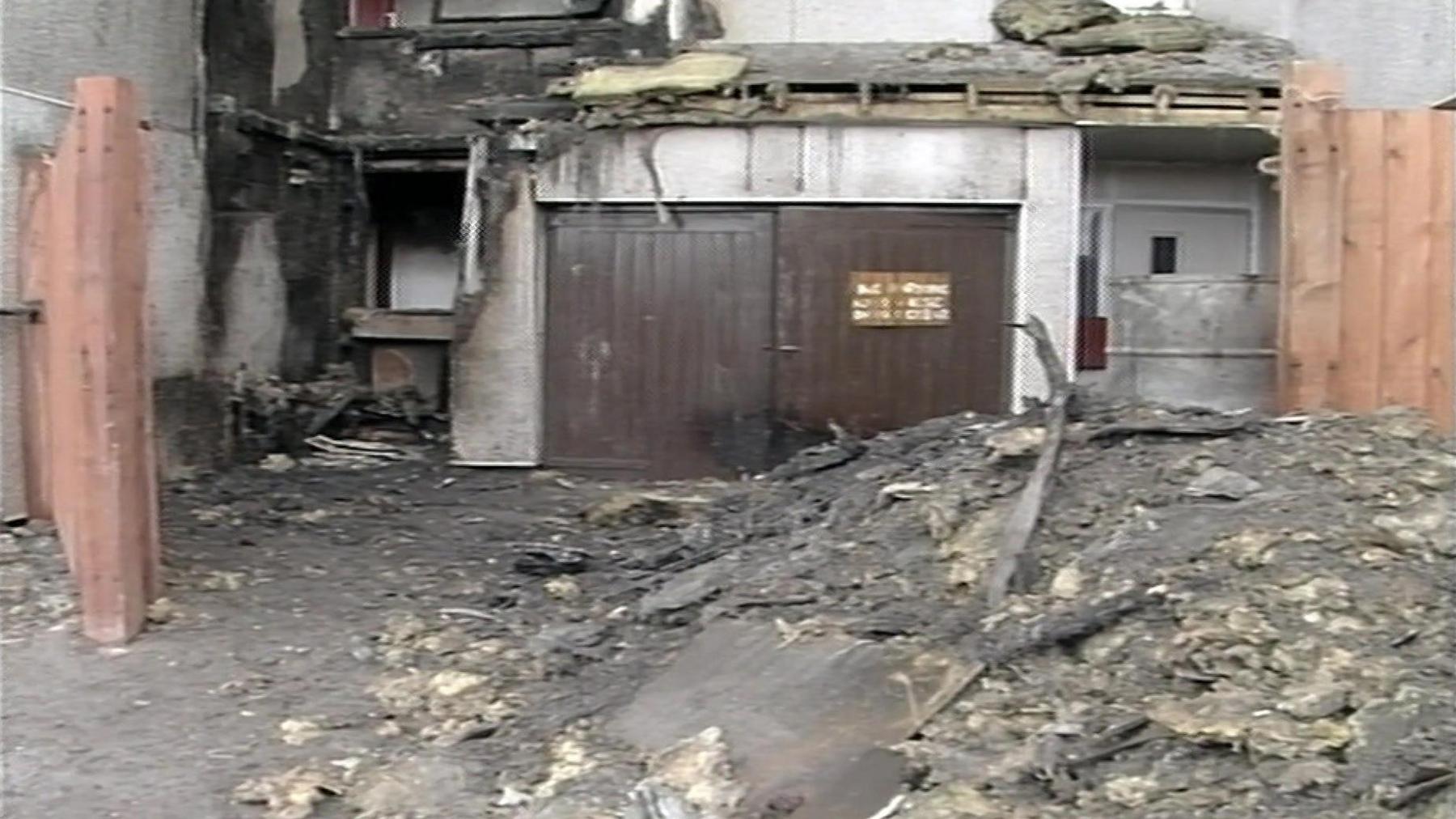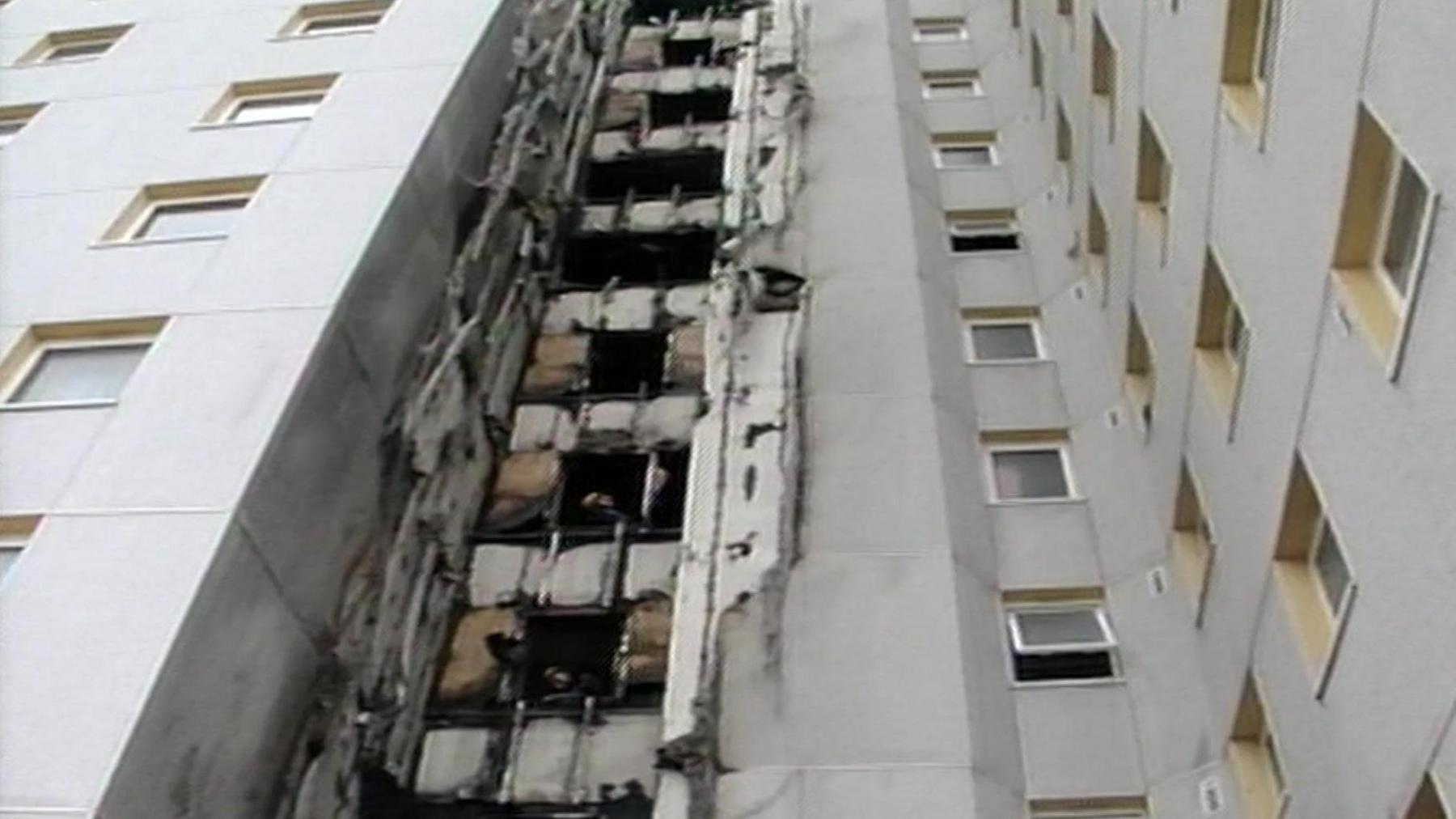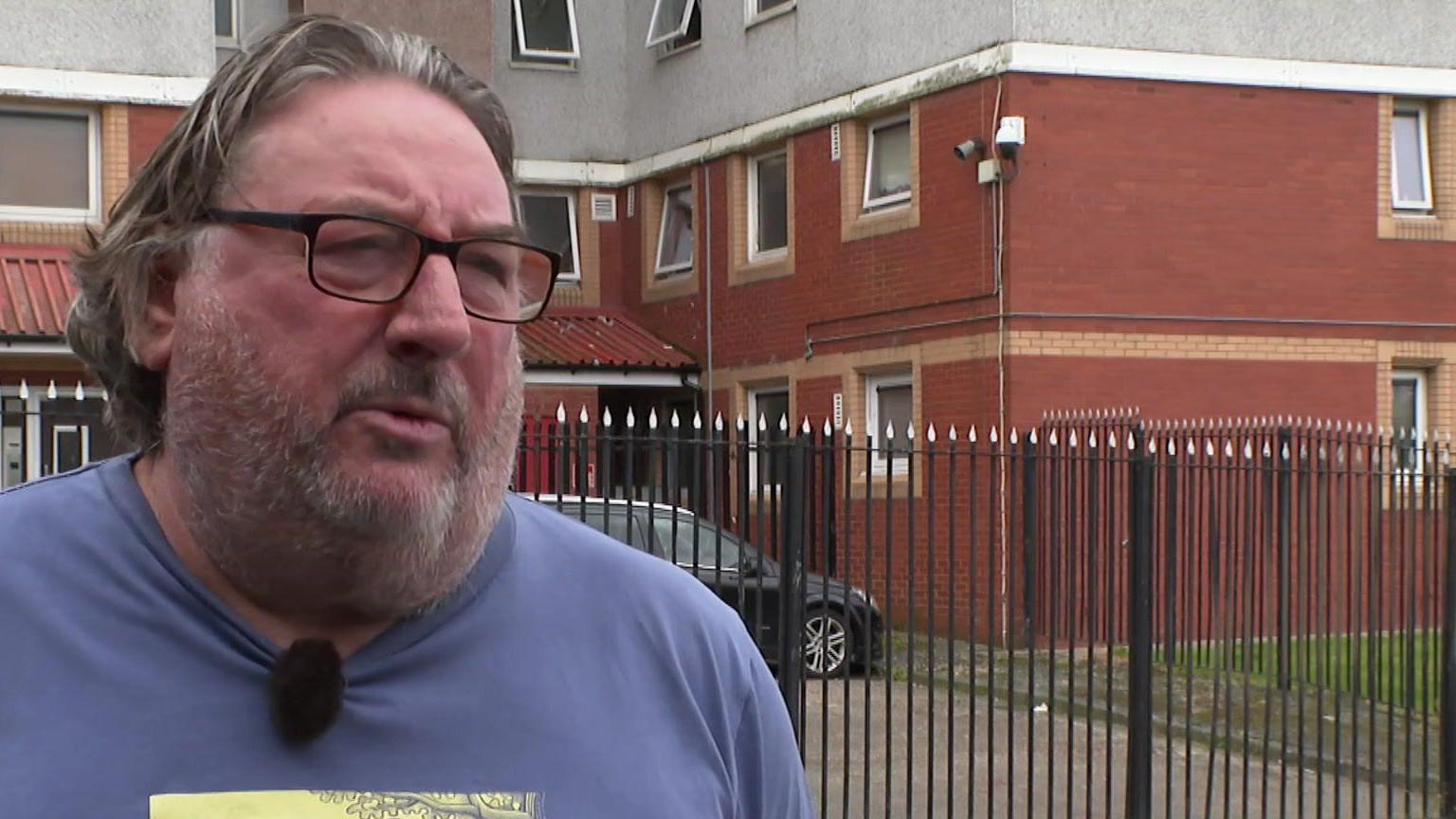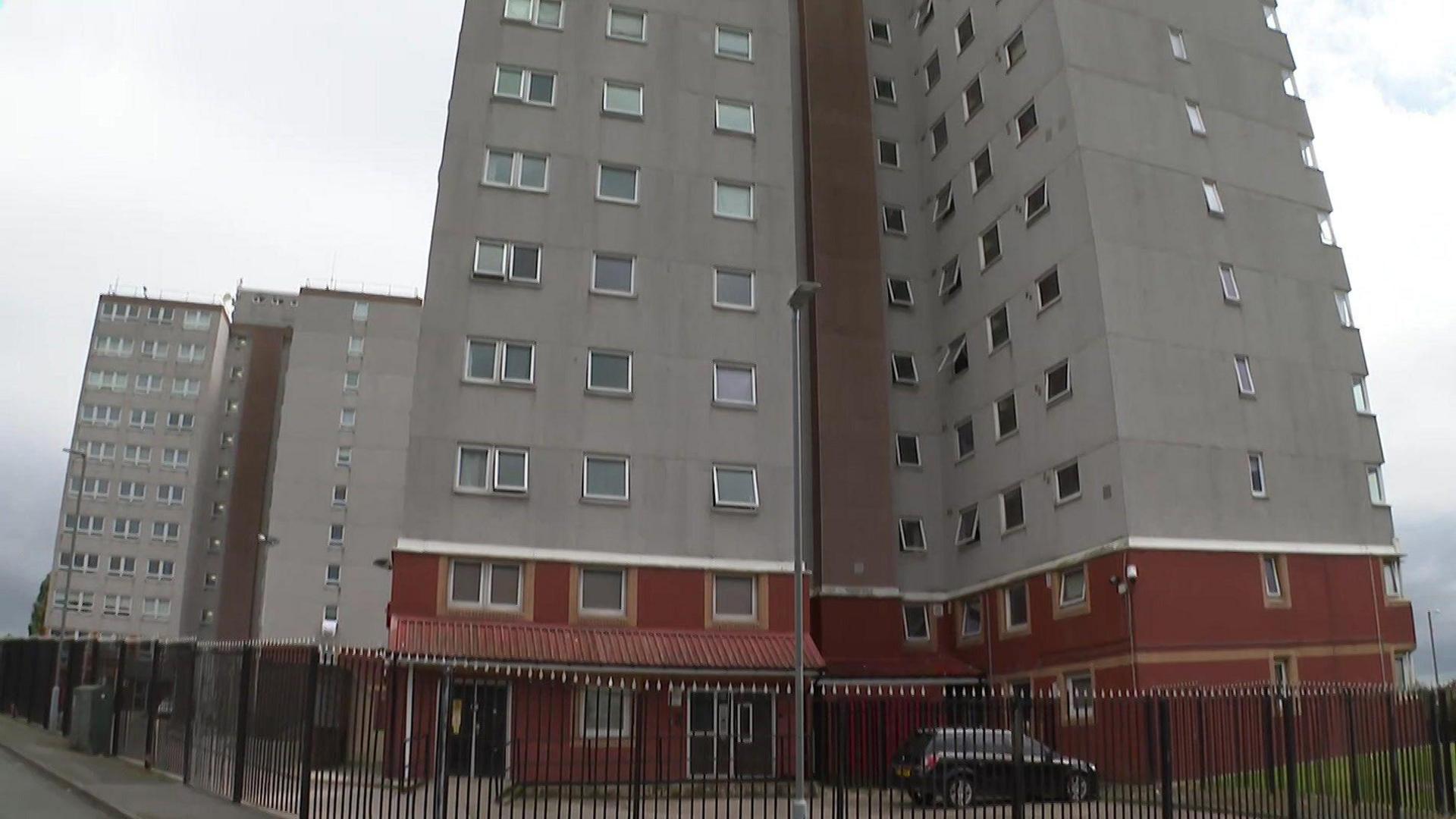Fire that was an omen of Grenfell 26 years before

Events that followed the Knowsley Heights fire "laid the ground" for the Grenfell tragedy, the public inquiry into the Grenfell Tower blaze said
- Published
A firefighter who tackled a cladding blaze on a tower block 33 years ago said the opportunity it presented to potentially avert the Grenfell disaster was "ignored".
Les Skarratts fought the fire at the 11-storey Knowsley Heights block of flats in Huyton, Merseyside, in 1991.
Although no-one died when the "combustible" cladding caught light, the Grenfell public inquiry found the Knowsley Heights fire "laid the ground for the 2017 tragedy" in London in which 72 people died.
Mr Skarratts said he and colleagues warned the government of the day it had a "national scandal" on its hands.
'Water bounced off'
The fire at Knowsley Heights had been started deliberately in a bin storage area at the base of one of the twin buildings that make up the complex.
By the time firefighters arrived, the entire 11-storey external wall above the bin area was alight, with flames coming out of all windows and from the roof.
Mr Skarratts, who became the Fire Brigades Union’s (FBU) most senior representative in the North West, said "the fire was travelling up the building without us being able to extinguish it".
The fire had spread through the 90mm gap between the building’s outer wall and new cladding which had been installed three years earlier.
The fire crews found the water from their hoses bounced off the cladding as they tried to douse the blaze.

The entire 11-storey external wall was alight with flames when firefighters arrived at the scene in 1991
Mr Skarratts said he and his colleagues were unaware of the new cladding or the effect it would have on their efforts to extinguish the flames.
"It was a very difficult fire for us, and it was made worse by the cladding falling on to us, and we had to control the fire and extinguish it on the floor," he said.
The Grenfell inquiry report described the cladding installed at Knowsley Heights as "a combustible polymer material".
It had been installed as part of a pilot scheme for the then-government’s Housing Management Estates Action programme, intended to improve the appearance of high-rise blocks, reduce energy consumption and prevent damp.
A report into Knowsley Heights by the then-government owned laboratory the Building Research Establishment (BRE) concluded there was "no reason to suggest that cladding in general posed a risk to life unless there were cavities large enough to allow the vertical spread of fire".
But the Grenfell inquiry report said the combustibility of the cladding panels themselves was "notably absent" from the BRE’s report.
The inquiry concluded the BRE report was "far from comprehensive" and "failed to identify or assess important contributory factors".

Les Skarratts says he and his colleagues from the Fire Brigades Union lobbied the government about the "national scandal"
Mr Skarratts said after the Knowsley Heights fire he and FBU colleagues "took it to the House of Commons, we took it to select committees, we lobbied government, we’ve told everybody that’ll listen to us that this is a national scandal".
He said: "You do despair 33 years later that there are still buildings in this country with worse cladding than Knowsley Heights had at the time, more fierce fires as a result of that cladding, and a government that’s supposed to protect the citizens and allows that sort of corporate greed to put us in danger.
"This sadly has been borne out by the deaths of 72 people in Grenfell."

The current owners of Knowsley Heights, Livv Housing Group, says the cladding on the building was replaced in 2008
The Knowsley fire led to building regulations being updated to more specifically define the type of materials that were permitted, but the flammable cladding was not banned because it had already been classed as meeting a British safety standard.
In the years before the Knowsley incident, the then-Conservative led government of Margaret Thatcher had cut hundreds of pages of building regulations.
The Grenfell report criticised successive governments and concluded the way building safety is managed in England and Wales was "seriously defective".
It found a policy of cutting regulations during by the 2010-2015 coalition government had so "dominated" thinking in Whitehall that "even matters affecting the safety of life were ignored, delayed or disregarded".
'Absolute priority'
The current owners of Knowsley Heights, Livv Housing Group, told the BBC its cladding was replaced in 2008 and is not the ACM-type cladding that was used on Grenfell Tower.
Group Executive Director Tony Cahill said: "In recent years, Livv has invested over £1.5m in fire safety improvements in the building to further reduce the risk to our customers in the event of a fire."
"Building safety is our absolute priority, and we have a continuous programme of improvement in place to ensure our high standards are maintained," he added.
Listen to the best of BBC Radio Merseyside on Sounds and follow BBC Merseyside on Facebook, external, X, external, and Instagram, external. You can also send story ideas to northwest.newsonline@bbc.co.uk, external